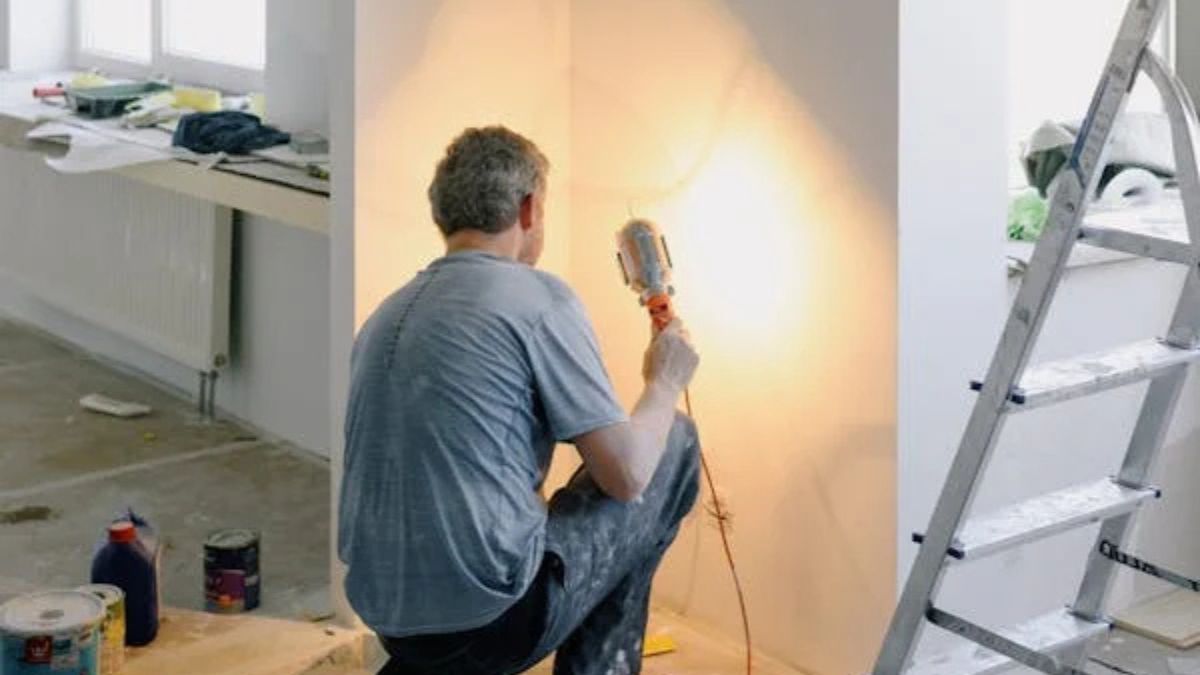Transforming History: Expert Tips for Renovating an Older Home

Renovating an older home is an exciting journey that combines preserving historic charm with modern functionality. Whether you’ve fallen in love with a vintage property or inherited a family estate, updating an older home offers numerous benefits—from enhanced energy efficiency to increased property value. However, it also comes with unique challenges that require careful planning, expert assessment, and respect for its architectural heritage. In this comprehensive guide, we will explore all aspects of renovating an older home, providing practical advice, industry insights, and inspiring ideas to help you successfully breathe new life into a vintage property.
Assessing the Current Condition of the Home
Conducting a Thorough Inspection
Before diving into the remodeling process, it’s crucial to assess the current condition of your home. This involves a detailed inspection to identify structural issues, safety hazards, and areas needing repair. Focus on key components such as the foundation and framing, which determine the house’s stability. Look for cracks, uneven floors, or signs of settling that could indicate foundational problems. The roof and gutter systems should also be evaluated for leaks, damaged shingles, or faulty drainage that might lead to water intrusion.
Next, inspect the plumbing, electrical, and HVAC systems. Outdated wiring or leaking pipes not only compromise safety but can also hinder energy efficiency. Check for signs of water damage, mold, or pest infestation—common issues in older homes that can escalate if left unaddressed. Exterior finishes like siding, brickwork, and window frames should be examined for rot, decay, or corrosion that may require repair or replacement.
If you are unsure about diagnosing these issues, consider hiring a professional home inspector. An expert can provide a detailed report, helping you prioritize repairs and avoid costly surprises later.
Hiring Professionals
When it comes to renovating an older home, involving professionals is often a smart investment. Building inspectors, structural engineers, and specialized contractors can assess hidden problems that might not be visible during a surface inspection. While working with experts may increase upfront costs, their assessments can save money and time by preventing improper repairs or code violations. Always vet contractors with a track record of working on vintage properties and familiarize yourself with local building codes and historic preservation standards. For more guidance on choosing the right team, visit the National Association of Home Builders.
Planning the Renovation
Setting Goals and Priorities
Establishing clear goals is the foundation of renovating an older home. Do you want to preserve its historic features for authenticity, or are you aiming for modern conveniences? Some homeowners prefer to strike a balance, retaining period-specific details while upgrading the home for contemporary living. Make a list of must-haves—such as updated plumbing or a new kitchen—and nice-to-haves, like custom moldings or stained glass windows. Prioritizing these helps you make informed decisions throughout the project.
Budgeting and Financing
Accurate budgeting is vital. Renovation costs for older homes can vary widely based on the scope, condition, and desired upgrades. Start by researching typical expenses in your area, and always include a contingency fund—generally 10-20% of the total budget—to cover unexpected repairs. Explore financing options such as home equity loans, renovation grants, or government incentives aimed at energy efficiency or historic preservation. A well-planned budget ensures that your renovation stays feasible and prevents financial stress.
Designing the Renovation
Work with architects or designers experienced with older homes. They can help you create a cohesive design that respects the building’s historic character while integrating modern features. Consider balance— preserving original woodwork, moldings, and hardware—and incorporating energy-efficient upgrades, like high-performance windows and insulation. To optimize functionality, focus on seamless integration between vintage aesthetics and contemporary needs.
Addressing Structural and Building Code Issues
Structural Reinforcement
Ensuring the structural integrity of your historic home is crucial. Old foundations may need reinforcement or underpinning, and load-bearing walls might require additional support. Addressing these issues early prevents future problems like sagging floors or wall cracks. Reinforcing or replacing load-bearing elements using period-appropriate methods maintains the home’s historic value while providing safety and stability.
Updating Electrical and Plumbing Systems
Electrical wiring and plumbing in vintage homes are often outdated and non-compliant with current local safety codes. Upgrading these systems is vital for safety and efficiency. Use period-appropriate fixtures that complement the historic character of your home while benefiting from modern performance. When updating wiring, consider smart controls and energy-efficient components to enhance convenience and reduce utility bills.
Ensuring Accessibility
Incorporate accessible features such as ramps, wider doorways, and lever-style hardware to meet ADA (Americans with Disabilities Act) guidelines if desired. Thoughtful accessibility improvements can make your home more comfortable for all users while preserving its historic charm. Check local regulations for compliance requirements specific to historic districts.
Preserving Architectural and Historical Details
Restoring Original Features
The heart of renovating an older home lies in preservation. Focus on restoring original moldings, trim, and decorative elements. Hardwood floors may be refinished rather than replaced, maintaining the authentic feel of the interior. Original woodwork and architectural details add character and value, making your renovation truly unique. For restoration guidance, consult resources from historic preservation societies such as the National Trust for Historic Preservation.
Choosing Materials and Finishes
Whenever possible, match original materials and finishes to preserve authenticity. Use period-appropriate hardware, fixtures, and paint colors. For example, vintage-inspired lighting or antique brass fixtures can complement restored woodwork, creating a cohesive aesthetic that honors the property’s history.
Modern Upgrades and Energy Efficiency
Insulation and Windows
Enhance the home’s energy efficiency with strategic upgrades. Installing energy-efficient windows that match the home’s style can dramatically reduce heating and cooling costs. Add insulation to walls, attics, and basements to improve comfort without compromising the historic exterior appearance.
HVAC Systems
Modern HVAC systems designed for older homes offer improved efficiency and better zoning capabilities. Integrate smart controls for remote operability, which can help reduce energy consumption while maintaining a comfortable interior climate.
Modern Amenities
Update kitchens and bathrooms with modern appliances and fixtures that blend seamlessly with the vintage style. Consider smart home technology, such as automated lighting or security systems, to add convenience without detracting from the home’s historic charm.
Addressing Common Challenges
Hidden Problems and Unexpected Repairs
Older homes can conceal issues like asbestos, lead paint, or hidden rot. Proactively plan for these challenges by performing thorough inspections before starting work. Allocate a contingency budget specifically for surprises, and consult specialists for hazard removal or specialized repairs. This proactive approach minimizes delays and additional expenses.
Navigating Regulatory and Historic Preservation Guidelines
Compliance with local regulations and historic district guidelines is essential. Obtain necessary permits and adhere to preservation standards to avoid legal issues. Engage with local historic commissions early to ensure your renovation plans are approved and preserve the home’s integrity. Visit American Planning Association for resources on navigating these guidelines.
Choosing the Right Contractors and Suppliers
Partner with contractors experienced in older home renovation. Their knowledge of period-appropriate techniques and materials ensures a respectful and authentic restoration. Sourcing reliable suppliers for period-specific fixtures, moldings, and finishes is equally important. Clear communication about expectations and timelines fosters a smooth workflow, leading to a successful project completion.
Managing the Renovation Process
Developing a realistic timeline helps keep the project on track. Coordinating multiple trades—such as carpenters, electricians, and painters—requires effective planning and communication. Protecting the property from damage and weather during construction is vital, especially in homes with delicate or deteriorated features. Regular site visits and updates from your project manager ensure quality and adherence to your vision.
Final Touches and Moving In
The finishing phase involves interior decorating that highlights the home’s historic character. Use period-style furniture, fabrics, and accessories to create an authentic ambiance. Landscaping should complement the architectural style and enhance curb appeal. Conduct a thorough inspection to create a punch list of minor fixes, ensuring everything is perfect before settling in.
Key Steps Summary Table
| Step | Key Considerations | Expert Tips |
|---|---|---|
| Initial Inspection | Structural, systems, exterior | Hire professionals for comprehensive assessment |
| Planning & Budgeting | Goals, costs, financing | Allow contingency funds; prioritize upgrades |
| Design & Permits | Architectural harmony, compliance | Collaborate with designers experienced in historic homes |
| Structural & System Updates | Foundation, electrical, plumbing | Use period-appropriate materials where possible |
| Preservation & Restoration | Original features, materials | Consult preservation societies for best practices |
| Modern & Energy Upgrades | Insulation, windows, HVAC | Balance aesthetic integrity with efficiency |
| Addressing Challenges | Hidden problems, regulations | Plan for surprises; consult experts early |
| Final Touches | Interior decor, landscaping | Stay true to original style themes |
Frequently Asked Questions
- How do I determine the true value of my old home before renovation? Consider hiring a professional appraiser or historic home specialist who can assess the property’s value based on architecture, restorations, and neighborhood trends.
- What are the most common hidden issues found during older home renovations? Hidden problems often include asbestos, lead paint, rot in wooden structures, faulty wiring, and plumbing decay.
- Is it possible to get grants or financial incentives for renovating a historic house? Yes, many local and federal programs offer grants, tax incentives, or rebates targeted at preserving historic properties and improving energy efficiency.
- How can I ensure my renovation preserves the historic value? Work with preservation societies, follow local guidelines, and choose contractors experienced in historic restoration.
- What materials should I use to match the original features? Use reclaimed or period-appropriate materials, and consult historic design resources for authentic hardware, fixtures, and finishes.
- How long does a typical renovation of an older home take? It varies significantly depending on size and condition but generally ranges from several months to over a year.
- How can I modernize my vintage home without losing its charm? Integrate energy-efficient systems, smart technologies, and contemporary conveniences subtly, ensuring they complement existing architectural details.
- What are key safety concerns during renovation? Address asbestos, lead-based paint, structural stability, and electrical safety before closing up walls or finishing interiors.
- Should I demolish certain parts to modernize faster? Preservation is often preferable; however, structural issues may necessitate partial demolition or replacement, always respecting historic integrity.
- Where can I find inspiration for my historic home’s renovation? Museums, historic districts, online portfolios, and professional societies provide excellent ideas for authentic restoration and modern integration.
Renovating an older home is a rewarding endeavor that combines preservation with modern upgrades. With careful planning, expert guidance, and a passion for history, you can transform a vintage property into a beautiful, functional home for generations to come. Embrace the challenge, respect the past, and create a space that tells its unique story.





